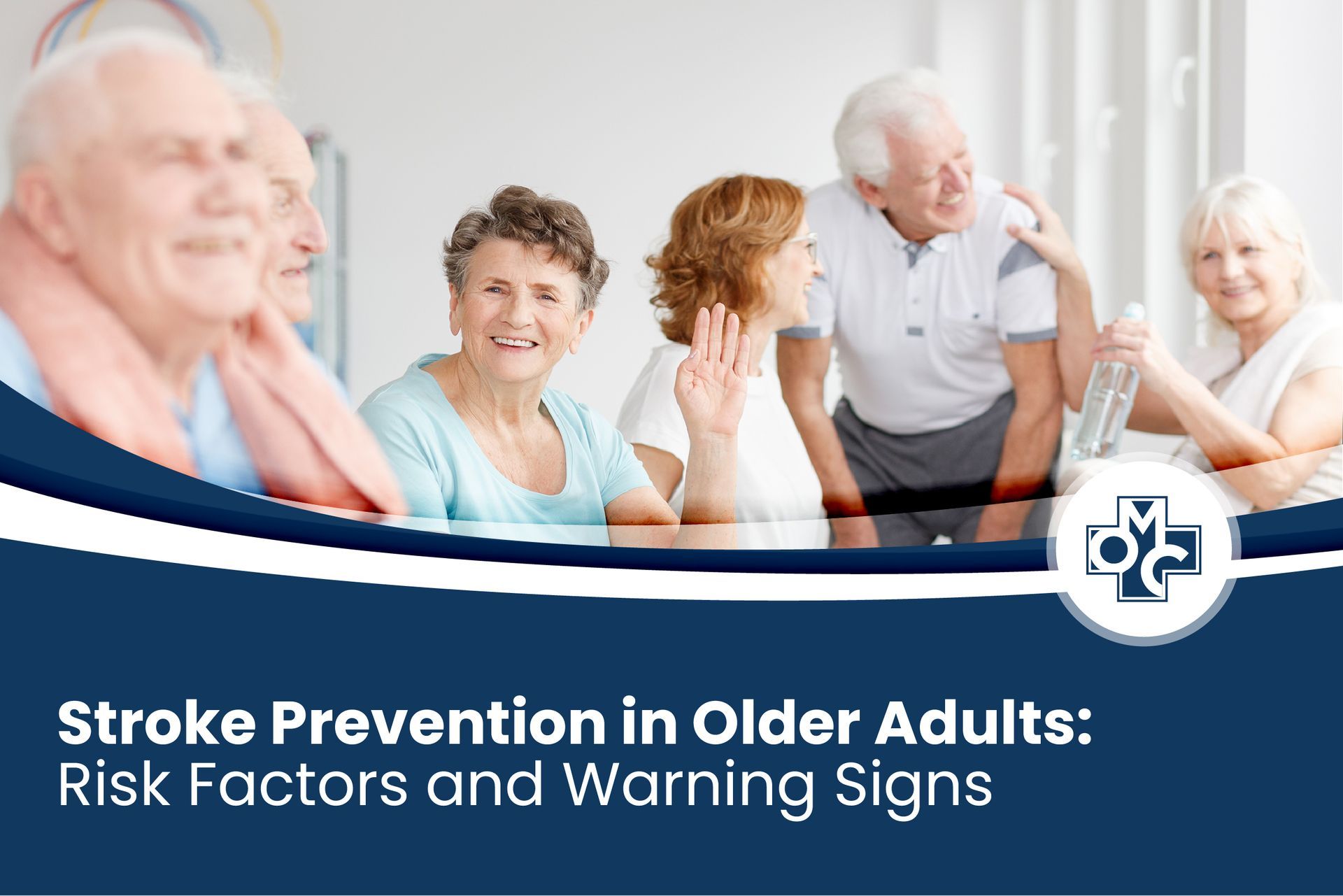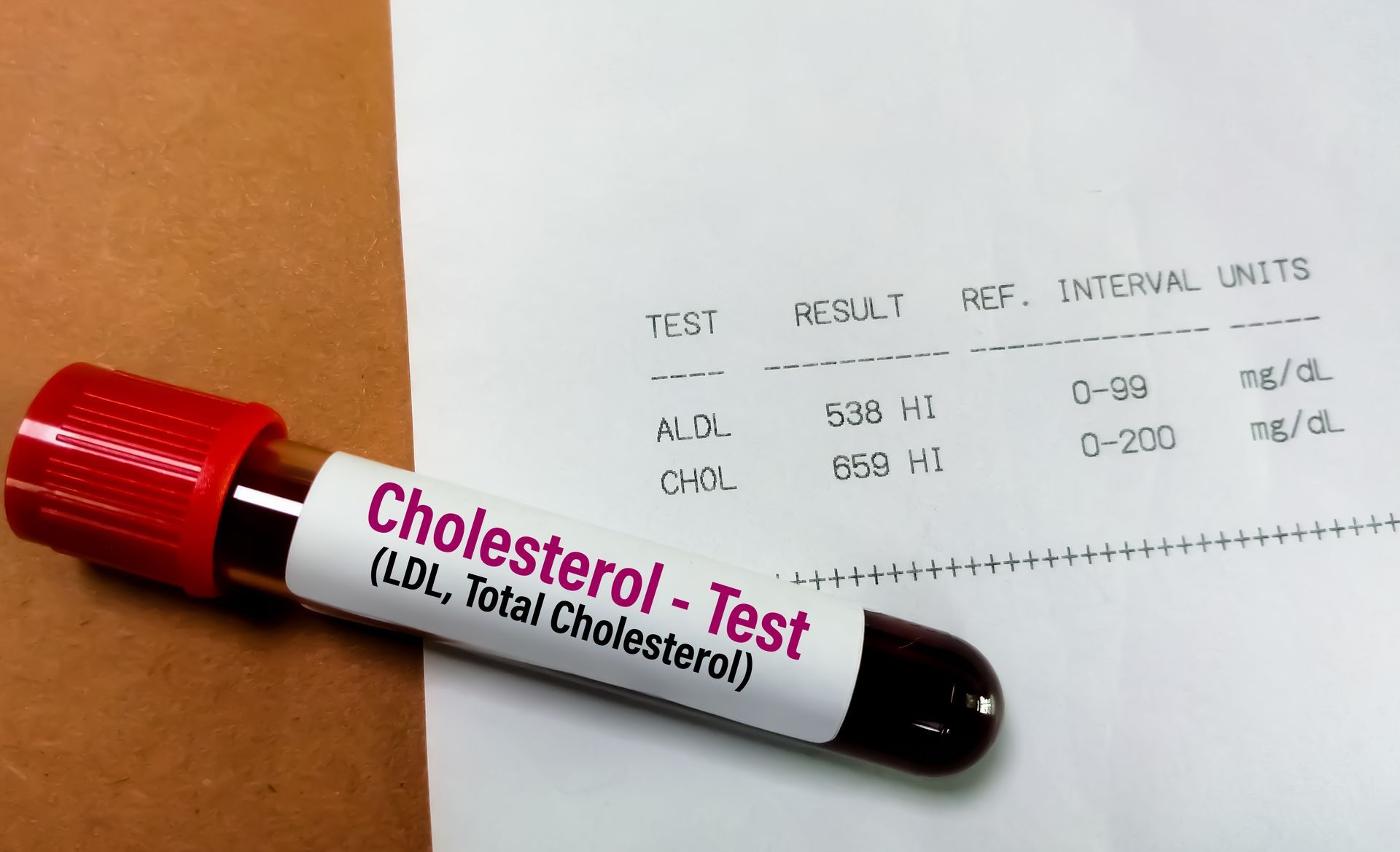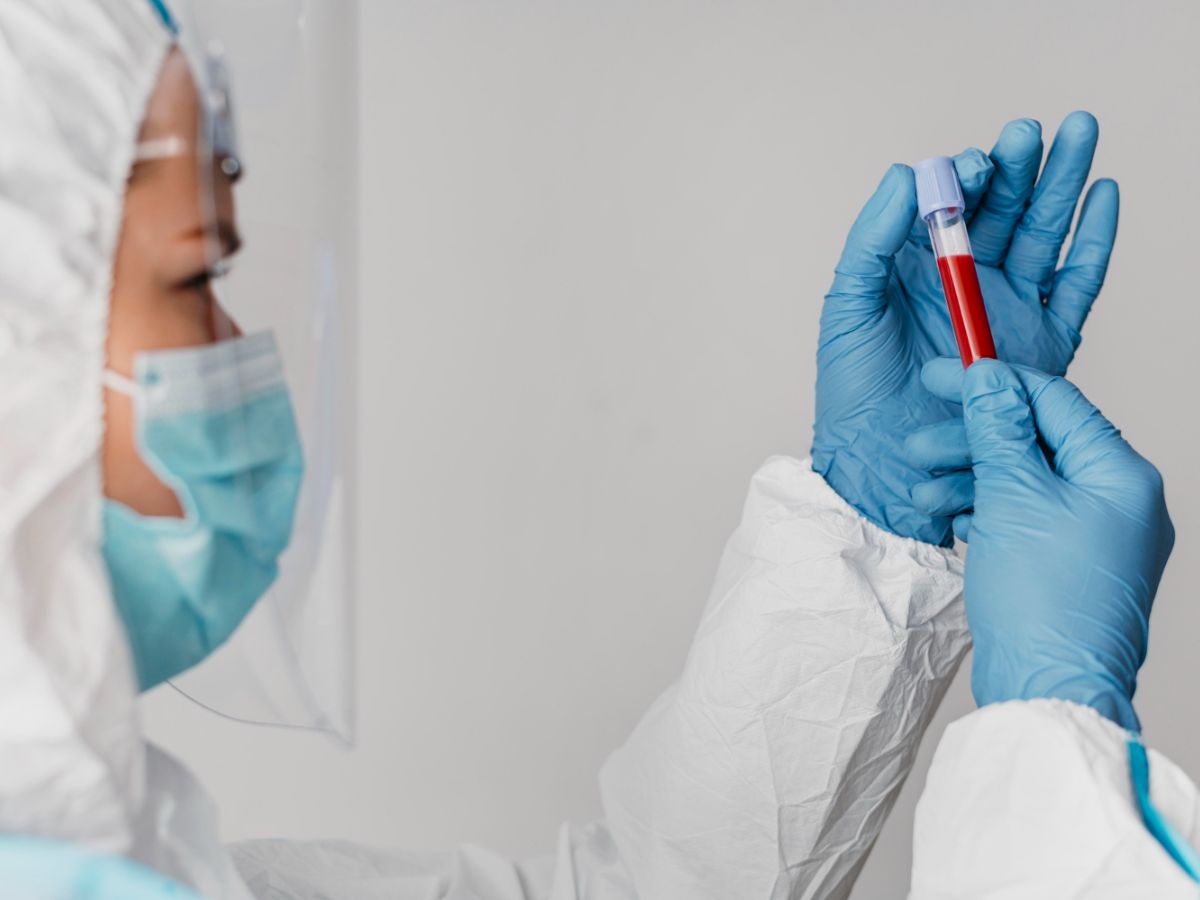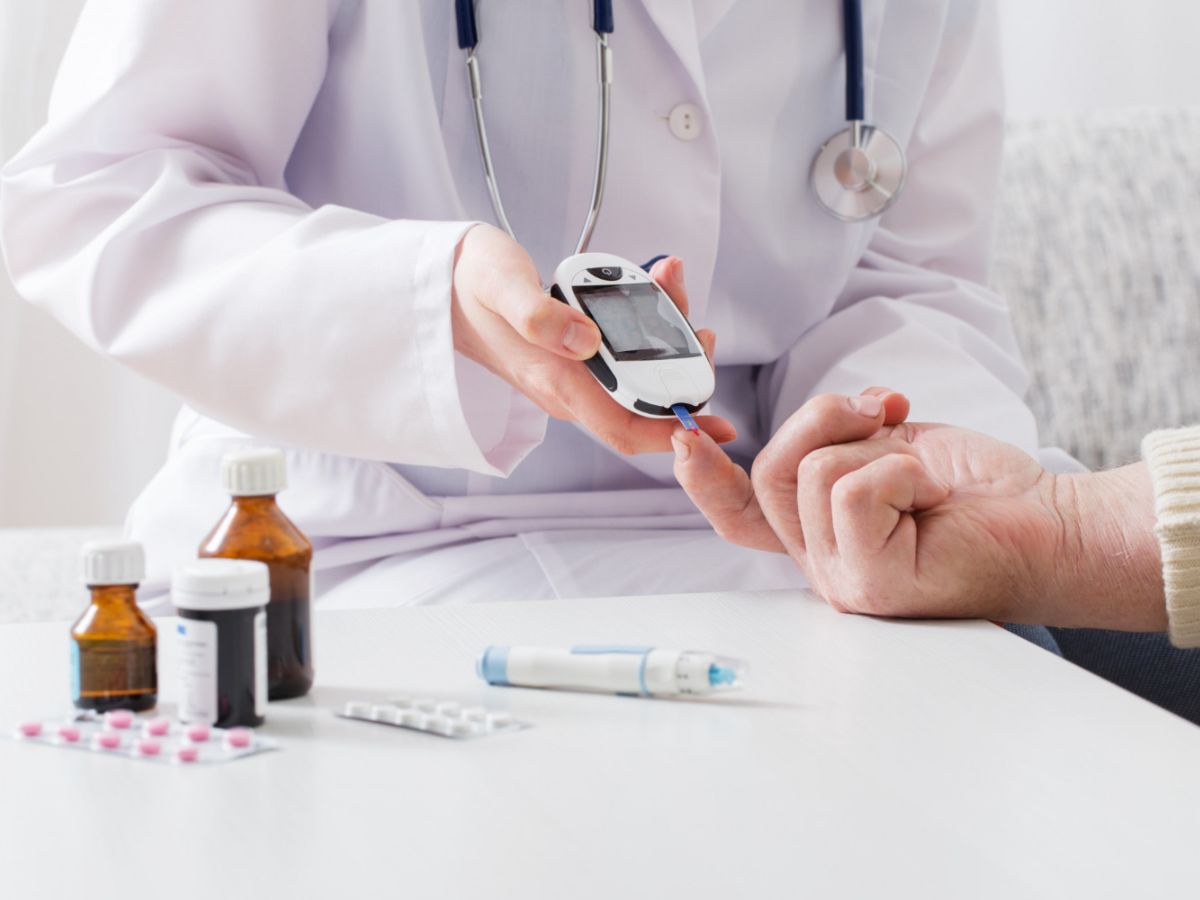Our Location
Elige tu idioma:
Stroke Prevention in Older Adults: Risk Factors and Warning Signs

Among the various concerns that older adults face, the risk of stroke stands out as a significant one. While the thought of a stroke may elicit fear, understanding the factors contributing to its occurrence and recognizing the warning signs can empower you to take charge of your health and minimize your risk. This blog will discuss how to prevent a stroke in older adults by exploring the risk factors and warning signs.
What is Stroke?
A stroke is a severe medical condition that can devastate a person’s life. It happens when the brain’s blood supply is cut off due to a blood vessel blockage or rupture. While anyone can have a stroke, older adults are more likely to suffer from one. According to the Centers for Disease Control and Prevention (CDC), nearly 38% of people hospitalized for stroke were under 65.
Risk Factors for Stroke in Older Adults
Several factors increase the risk of stroke in older adults. Some risk variables, such as age, gender, and family history, are beyond our control. However, we can address several modifiable risk factors to reduce the likelihood of stroke. Here are some of the most common risk factors for stroke in older adults:
- High blood pressure
Hypertension, often known as high blood pressure, is a significant risk factor for stroke. It strains the blood vessels, making them more likely to burst or become blocked. Older adults should monitor their blood pressure regularly and work with their doctor to manage it.
2. Smoking
Cigarette smoking is another significant risk factor for stroke. It damages the blood vessels and increases the risk of blood clots. Quitting smoking can significantly lower your chances of having a stroke.
3. High cholesterol
High cholesterol levels in the blood may cause plaque accumulation in the arteries, raising the risk of stroke. Older adults should have their cholesterol levels checked regularly and make lifestyle changes or take medication to manage it.
4. Diabetes
Diabetes raises the risk of stroke because high blood sugar levels can damage blood arteries. Managing diabetes through diet, exercise, and medication can help reduce the risk of stroke.
5. Atrial fibrillation
AFib (atrial fibrillation) is a cardiac ailment that results in an erratic heartbeat. It increases the risk of blood clots, which can lead to stroke. Older adults with AFib should work with their doctor to manage the condition and reduce the risk of stroke.
Lack of exercise increases the risk of stroke. Older adults should get at least 150 minutes of moderate-intensity weekly exercise to maintain cardiovascular health.
Warning Signs of Stroke in Older Adults
Recognizing the early warning signs of stroke is crucial for early intervention and treatment. The earlier a stroke is treated, the better the outcome. Here are some of the signs of stroke in elderly:
- Numbness or weakness in one side of the body’s face, arm, or leg with no warning.
- Confusion or difficulty speaking or interpreting speech that occurs suddenly.
- Sudden loss of eyesight in one or both eyes
- Walking difficulties, dizziness, lack of balance, or coordination
- Unknown source of an unexpected acute headache
Not all strokes manifest similarly, and symptoms might differ based on the kind of stroke and the location of the brain affected. However, if you or someone you know encounters these warning signals, you must seek medical treatment immediately.
How to Prevent a Stroke
Preventing strokes in older adults involves reducing modifiable risk factors and addressing warning signs promptly. Here are some tips on how to prevent strokes in the elderly:
Older adults should work with their doctor to manage their blood pressure through medication, diet, and exercise.
2. Quit smoking
Smoking cessation is crucial in reducing the risk of stroke.
3. Manage cholesterol levels
Older adults should aim to maintain healthy cholesterol levels through diet, exercise, and medication if necessary.
4. Manage diabetes
Older adults with diabetes should work with their doctor to manage their blood sugar levels through medication, diet, and exercise.
Being overweight or obese raises the chance of having a stroke. Older adults should aim to maintain a healthy weight through diet and exercise.
6. Exercise regularly
Regular physical exercise can help lower the chance of having a stroke. Older adults should get at least 150 minutes of moderate-intensity exercise per week.
A nutritious diet heavy in fruits, vegetables, whole grains and low in saturated fat can help minimize the risk of stroke.
8. Address warning signs promptly
If you or someone you know exhibits any stroke warning symptoms, get medical assistance immediately.
Older adults should also work with their doctor to manage any underlying health conditions that increase the risk of stroke, such as atrial fibrillation or carotid artery disease.
Frequently Asked Questions on How to Avoid Stroke:
What are the early warning signs of stroke in elderly women?
- The early warning signs of stroke in elderly women may include sudden numbness or weakness on one side of the body in the face, arm, or leg; sudden confusion or difficulty speaking or comprehending speech; unexpected difficulty seeing in one or both eyes; unexpected difficulty walking, dizziness, a sudden intense headache with no known cause It’s important to note that not all strokes present these symptoms, and some strokes may have more subtle atypical symptoms. Seek medical assistance immediately if you or someone you know exhibits any of these symptoms.
How can I lower my risk of a stroke?
- If you’re an older adult, you can lower your risk of stroke by managing your blood pressure, quitting smoking, managing cholesterol and diabetes, maintaining a healthy weight, exercising regularly, eating a healthy diet, and addressing warning signs promptly. It would help if you also worked with your doctor to manage any underlying health conditions that increase the risk of stroke.
Can side effects from a stroke be treated?
- Yes, side effects from a stroke can be treated, but getting medical assistance to treat side effects from a stroke as soon as possible is critical. Stroke treatment may include medication to break up blood clots or surgery to remove a lump or repair damaged blood vessels.
Reduce Your Risk: Understanding Stroke Prevention in Older Adults
Stroke prevention is a critical aspect of health care for older adults. By managing risk factors, being aware of warning signs, and seeking medical attention promptly, older adults can reduce their risk of stroke and improve their overall health and well-being. If you or someone you know is at risk of having a stroke, speak with a doctor about ways to avoid a stroke and promote good health. Remember, the earlier you take action, the better your outcomes will likely be.
Are you concerned about stroke prevention in older adults? Don’t wait until it’s too late to take action! At Ocana Medical Center, we offer comprehensive support to help you manage your risk factors and stay healthy. From evaluations to personalized care plans and ongoing support, our team is here to guide you every step of the way. Don’t let stroke take control of your life. Visit our website today to learn how we can assist you and your loved ones in staying healthy and safe. Call (813) 968-8314 or click the
book an appointment button on our website to schedule your appointment and take the first step towards a healthier future.
Ocana Medical, located in Tampa, FL, aims to bring you as much information as possible to keep you healthy. We're in this together. #ocanacares
“Respect. Compassion. Quality. Integrity. These are the values on which Ocana Medical Center was built. Our aim isn’t just to treat you today. We hope to earn your trust and be your healthcare provider for life.”
©2023 Ocana Medical Group, Inc.
USEFUL LINKS
GET IN TOUCH
Call Us Today
Send us Email
Our Location
Ocana Medical Center | All Rights Reserved.












